After four full days of learning about art in the Museum’s collection and discovering strategies for discussing and making art, participants of the Art & Language Arts program developed seven original lesson plans—all in a few hours time!
-

-
One person’s trash is another person’s treasure. In our final media exploration, teachers were challenged to make art out of recycled materials. Note the fanciful French swings created by our fabulous intern Iris.
-

-
Teachers explore the array of interesting forms available from Trash for Teaching.
-

-
Teachers share ideas while playing with recycled materials to create a variety of shapes and forms.
-

-
A queen emerges from bins of recycled materials.
-

-
Ah! It’s another beautiful day at the Getty Center.
-

-
Teachers exit the galleries after writing about the same work of art they selected on Monday. They discovered so much more in their selected artworks after over four days of intensive training.
-

-
Third and fourth grade teachers refine their lesson with museum educator Theresa Sotto.
-

-
Tan Pratontep describes his lesson, which connects his autistic students to works of art.
-

-
SDC teachers present on their lesson, which focuses on expressive gestures in a sculpture and a painting.
-

-
To create sculptures that communicate poses, all you need are a few twist ties and a little bit of imagination.
-

-
Fifth grade teachers connect to their “Take a Stand” unit by discussing Walker Evans’s Bridgeport Parade.
-

-
A great way to reinforce students’ knowledge of shapes is to use paper shapes on the document reader.
-

-
After discussing the shapes visible in a family portrait by Johann Zoffany, students can use paper shapes to create their own family portraits.
-

-
Teachers demonstrate how to enhance students’ skills at comparing and contrasting by discussing family portraits by Johann Zoffany and Quiringh Gerritsz. van Brekelenkam.
-

-
Question: What’s a fun way to teach the concept of balance in works of art?
-

-
Answer: Try balancing on one leg while your arms are on the shoulders of a partner.
-

-
Inspired by Claude-Nicolas Ledoux’s Paneled Room, teachers display unbalanced designs and discuss how to add to the designs to create balance.
-

-
The expressions in the figures of Georges de La Tour’s The Musicians’ Brawl are priceless!
-

-
Studying expressions in works of art will help students to create their expressive portraits.
-

-
Third and fourth grade teachers found the perfect work for addressing their “Let’s Learn” theme—a portrait of a prince by Jan Lievens.
-

-
After discussing a work of art depicting a student who is learning, students can create their own pictures of a memory when they learned something.
-

-
After a week of tours, talks, and seminars, teachers get rewarded with free books and reproductions.
-

-
Teachers from 42nd Street Elementary School pause for a picture with Theresa Sotto after five intensive, but rewarding days.
Most Getty Museum staff members have never been to our paintings storage area, but today the participants of the Art & Language Arts (ALA) program got a special behind-the-scenes tour. What a special treat after four intensive days of workshops, tours, art-making, lesson planning, and reading discussions!
Speaking of readings…ALA teachers, please leave a comment that describes a concrete way that you can develop your students’ artistic and perceptual growth (see the list on p. 19 of your reading).
-

-
Every day should begin with art! We kick off the fourth day of the Art & Language Arts seminar with printmaking.
-

-
Teachers were challenged to create blind contour drawings by etching into scratch foam.
-

-
Teacher Diana Bosworth views the colorful results of her print.
-

-
Teacher Bill Steffes looks pleased with the results—as he should be!
-

-
42nd Street Elementary School teachers Judy Matsumoto and Donna Massenburg are enjoying the printing process.
-

-
Tan Pratontep created a beautiful scene using a variety of lines.
-

-
Love the experimentation with color!
-

-
Museum educator Kelly WIlliams leads a discussion about four components of a quality art curriculum—artistic and perceptual skills, artistic production, art history, and art analysis.
-

-
Teachers from Kennedy Elementary School share ideas for their lesson plans.
-

-
Museum educator Theresa Sotto discusses the benefits of open-ended questions to elicit meaningful responses from students.
-

-
After making art, exploring strategies for teaching art, participating in curator tours, and eating delicious breakfasts, teachers are now challenged to develop a lesson plan in just a few hours.
-

-
Teachers are hard at work planning their arts-integrated lesson plan.
-

-
And now for the reward! Teachers get to see our paintings storage area, where they can see works of art that are not on view in the galleries.
-

-
On the way to the paintings storage, where curator Peter Bjorn Kerber regales us with fascinating stories about paintings that the general public is not currently able to see.


















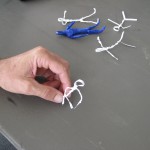
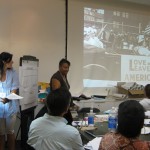
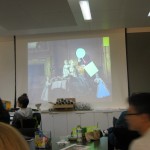
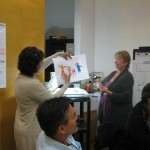


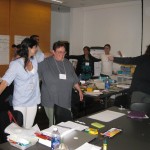






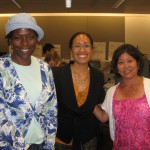














Recent Comments